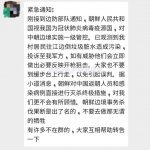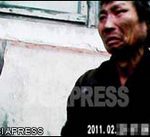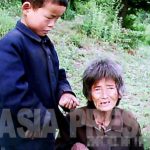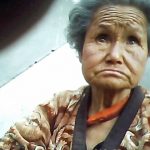
North Korea’s authorities continue to claim that, as of May 25, there are “zero coronavirus infections” in the country. Is this true? To find out the reality of the situation in the north, ASIAPRESS has been investigating the matter since late January in collaboration with reporting partners living across North Korea.
Looking at the results of our investigation and information provided by state media, it must be said that the Kim jong-un regime has made great progress in preventing the initial spread of the coronavirus. It seems that the early decision to close the border with China and introduce quarantine measures was quite effective. This is not to say that life for locals has been easy, their suffering invisible to the outside world, North Korean citizens have had to make huge sacrifices to maintain the current situation.
In mid-January, North Korea banned foreigners from entering the country just before the start of the Lunar New Year tourism season, following news of the outbreak in Wuhan, China. The North Korean authorities closed the border with China entirely, suspending trade since the end of January. Inside the country, it was as if martial law had been declared. All trade and customs officials who had been in contact with foreigners were forced into quarantine for 30 days. “Mask checks” were even conducted in parts of the country. Trains continued to run but car traffic and other individual transport were stopped almost entirely.
Indeed, domestic countermeasures were highly coercive. In the northern part of the country close to China, residents were informed that accessing border streams would be punished by military law. Rumors spread in February that smugglers who had returned recently from China were executed, along with a man who had attempted to escape quarantine. (It is possible, however, that the authorities spread false rumors to intimidate the local population.)
According to a report submitted by North Korea’s health authorities to the World Health Organization, about 25,000 people had been monitored or placed under quarantine as of early April. It is unknown whether this figure is accurate but the number of quarantined citizens is unusually high for a country that supposedly has “zero infections.” According to a reporting partner, officials were quarantined in hotels and ordinary citizens were quarantined in offices or warehouses. One family was apparently kept in quarantine in their house for an entire month. During the quarantine period, citizens had to pay for their own meals.
These rapid and compulsory responses, which did not require any consideration for human rights or personal circumstances, are typical of a country with a poor medical and health infrastructure. Dr. Ki-Beom Park, a Korean-American who has visited North Korean hospitals over the last 13 years said, “There is likely no more than 50 respirators in the whole country.”
If an epidemic were to spread across the country, with infections overcoming the military, security agencies, and powerful core in Pyongyang, the regime’s operations would be significantly disrupted, requiring even more outside support and creating a huge national sense of crisis.
◆ Prudent medical examinations but insufficient supplies
In order to understand the reality faced by North Korea’s medical field, reporting partners living in Ryanggang and North Hamkyung Provinces were asked to investigate the situations at hospitals and clinics. The findings showed that the authorities were taking surprisingly prudent countermeasures.
For example, people with cold-like symptoms were told to not come to the hospital but to, instead, first receive “remote treatment” by phone. In addition, medical staff were told to examine patients at a distance of at least 2 meters or more. In cases of suspected infection, patients were instructed to contact the quarantine center to receive a registration card, recording their address, workplace, and recent activities. Furthermore, those working at trading companies or living near the Yalu River on the Chinese border, were designated as high-risk individuals and monitored. Information on the progress of these countermeasures was collected each day at local hospitals, which were designated as bases for such operations.
It can be said that the countermeasures were quite reasonable and effective in preventing the spread of coronavirus to health care personnel and in identifying possible routes of transmission. This system, it seems, was established in late February.
On the other hand, according to the reporting partners’ investigation, there were no coronavirus infection tests conducted in any of the medical facilities visited as of early April. Though rumors of infections and coronavirus deaths have spread widely, there has been no solid information available. This may be due to a gag order from the regime or it may be simply due to the fact that the medical and quarantine officials had no way to check for the infection, at least in the provincial cities.
In a press conference on April 27, China’s Foreign Ministry announced that it had sent coronavirus test kits to North Korea. And, in a letter delivered to Kim Jong-un on May 9, President Xi Jinping emphasized his country’s support for North Korea’s countermeasure efforts.
Next page :◆ 90% decrease in trade with China deals huge blow to domestic economy...

























